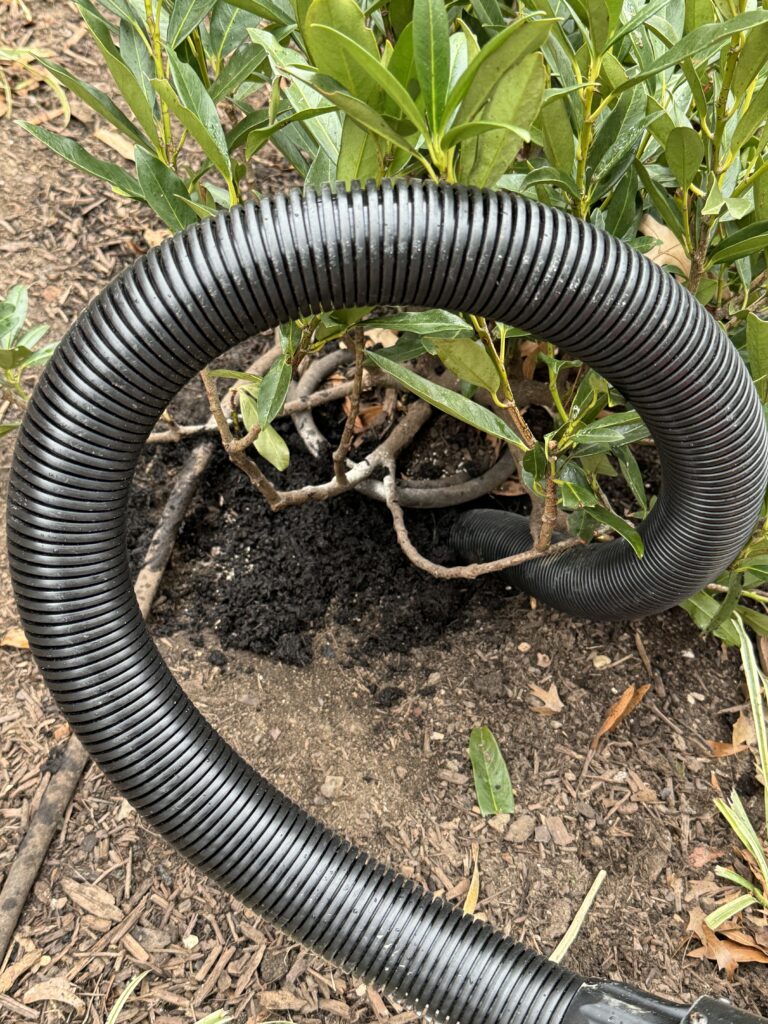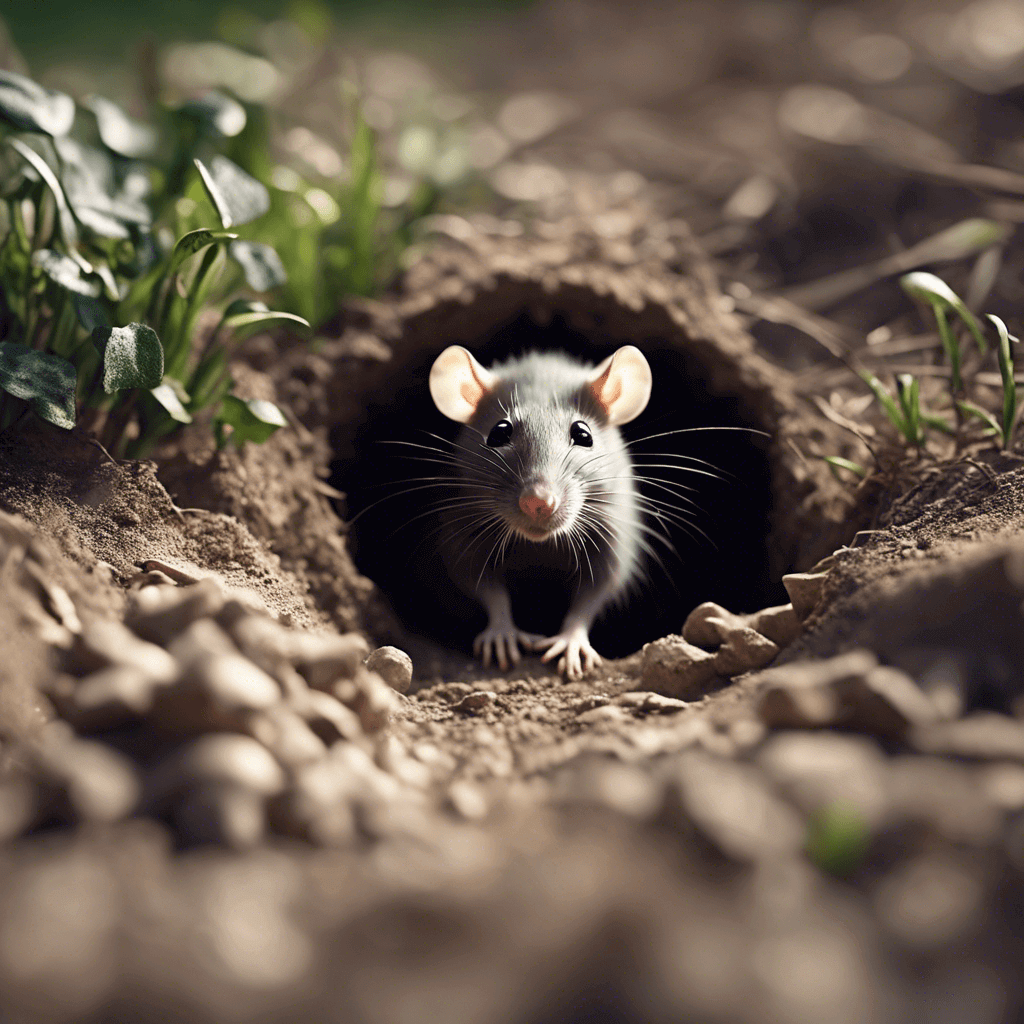While the dangers and negative impact of carbon dioxide (CO2) as a leading cause of global warming are well established, carbon monoxide for rat control have emerged as a positive use of this gas. CO2 can be an effective solution for targeting and eliminating rodents without resorting to pesticides or the safety concerns for pets and other wildlife such as birds.
The Rat Infestation Problem
The rat infestation problem in Washington, D.C., and cities such as New York has been well documented. New York City alone has reported more than 3.2 million rat sightings. Increased rat problems in Washington, D.C. are also reported due to increased construction, milder winters, and poor sanitation. Maybe you have had a few rat issues yourself. Whether you live in the suburbs or the city, rats in Arlington are just as a big problem. It's a widespread issue that's been tough to handle, despite Arlington County's best rodent control efforts. Traditional methods like traps and poisonous baits haven't fully succeeded in stopping these pests.
Given the extent of growing rat infestations across the country, carbon monoxide has emerged as one innovative solution. For example, one New York City block with over 100 rat burrows was treated with CO2. Residents of this neighborhood reported a significant decrease in rat sightings after the treatment. My Pest Pros has successfully eliminated rodent burrows with carbon monoxide in Washington, D.C., and Maryland.
What is Carbon Monoxide for Rat Control?

What sets this method apart is its humane and cost-effective approach. It doesn't leave behind poisonous baits, a common concern with traditional rat control methods. Plus, it's been praised for its significant reduction in rat populations in treated areas.
The use of carbon monoxide for rat control has garnered support from the community and even from New York City's 'rat czar' due to its effectiveness. In heavily infested areas, regular service may be necessary, but for most, a single treatment can control the situation.
While it's not a silver bullet for all rat problems, carbon monoxide treatment is proving to be a powerful tool in the fight against rodent infestation. It's certainly worth considering if you're grappling with a rat problem.
Understanding the Effectiveness of CO2:
- Oxygen Deprivation: Carbon monoxide for rat control disrupts the delicate balance of oxygen levels within rodent burrows, creating an environment inhospitable to pests. Rodents, highly sensitive to changes in oxygen concentration, struggle to survive in the presence of elevated CO2 levels. By delivering CO2 directly into burrows, this method ensures a swift and humane reduction in rodent populations, without causing undue harm to non-target species. Some people have compared the use of CO2 to working the way anesthesia does during surgery, putting rodents to sleep.
- Deep Penetration: One of the key advantages of CO2 as a pest control agent lies in its ability to penetrate soil and other barriers with remarkable efficiency. Unlike conventional pesticide treatments, which may struggle to reach rodents in underground habitats, CO2 gas diffuses through the substrate, effectively reaching rodents deep within their burrows. This comprehensive approach leaves no refuge for pests to evade treatment, ensuring thorough eradication.
- Residue-Free Treatment: CO2 treatments leave no harmful residues behind, making them suitable for application in various environments, including residential, commercial, and agricultural settings. This eliminates the risk of ongoing exposure to pesticides and ensures immediate results without the need for extended monitoring or cleanup efforts. The absence of residual chemicals also minimizes potential harm to beneficial insects, plants, and wildlife, contributing to overall ecosystem health.
- Precision Application: CO2 treatments can be precisely targeted to rodent-infested areas, minimizing the risk of exposure to non-target organisms. This focused approach not only enhances the effectiveness of pest control efforts but also reduces collateral damage to beneficial species, such as pollinators and natural predators of pests. By sparing these organisms, CO2 treatments help maintain ecological balance and biodiversity in the surrounding environment.
- Sustainability: CO2 is a naturally occurring gas that is abundant in the atmosphere, making it a renewable and environmentally friendly resource for pest control. By harnessing CO2 as a pest management agent, practitioners can reduce reliance on synthetic chemicals and minimize their environmental footprint. This sustainable approach aligns with global efforts to promote eco-friendly solutions for pest management, contributing to a healthier and more resilient ecosystem.
Risks and Safety Concerns
While it's clear that carbon monoxide has proven effective in rat control, there are risks and safety concerns associated with this method. Carbon monoxide, though effective, comes with its own set of risks. It's a silent, odorless gas that's lethal to not only rats but also humans and other animals when inhaled in large quantities.
For safety, it's crucial to use the correct equipment and follow guidelines when applying carbon monoxide for rodent control. There's also the risk of non-target animals, such as pets or wildlife, inadvertently being exposed to the gas. Even though it's considered a humane method, causing no prolonged suffering to rats, precautions must be taken to ensure human safety and to prevent unintended animal casualties.
For these reasons, only pest control professionals should use CO2 to eliminate rats.
Carbon monoxide for rat control does reduce risks of secondary poisoning, often associated with traditional poison baits. It eradicates entire rat colonies in a single service, making it a cost-effective solution. However, remember to weigh the safety concerns alongside its effectiveness. Always use this method responsibly, keeping the safety of all living beings in the vicinity in mind.
Are There Negative Effects of Using CO2 for Eliminating Rats?
While using carbon dioxide (CO2) for eliminating rats offers several advantages, it's essential to consider potential negative effects as well:
- Non-Target Species: While CO2 treatments are targeted towards rodents, there is a possibility of affecting non-target species that inhabit similar underground habitats. Careful application and monitoring are necessary to minimize the impact on beneficial organisms like insects, earthworms, and other small animals.
- Limited Reach: CO2 treatments may not effectively reach all areas of rodent infestation, especially in complex underground burrow systems. Rats can have extensive networks of tunnels and hiding places, which may require multiple treatments or supplementary control methods for comprehensive eradication.
- Cost and Equipment: Implementing CO2 treatments typically requires specialized equipment, such as the Cheetah machine, which may involve initial investment costs for pest control companies. Additionally, the operational costs associated with CO2 treatments, including maintenance and refill of CO2 tanks, need to be considered.
- Regulatory Compliance: Pest control companies must adhere to regulations and guidelines governing the use of CO2 for pest management. This includes ensuring proper training for technicians, following safety protocols, and complying with environmental regulations to prevent unintended harm to humans, animals, or the environment.
- Limited Long-Term Control: While CO2 treatments can provide immediate results in reducing rodent populations, they may not offer long-term control solutions on their own. Integrated pest management (IPM) approaches, combining multiple strategies such as sanitation, exclusion, and monitoring, are often necessary for sustained rodent control.
- Carbon Footprint: While CO2 is a naturally occurring gas, its production and transportation for pest control applications contribute to carbon emissions. Pest control companies should consider ways to minimize their carbon footprint, such as optimizing equipment efficiency and exploring renewable energy sources for CO2 production.
Overall, while CO2 treatments offer a safer and more environmentally friendly alternative to chemical pesticides, careful consideration of potential negative effects and comprehensive pest management strategies are essential for effective rodent control while minimizing unintended consequences.
Can I Do A Carbon Monoxide Treatment for Rats Myself?
No, performing a carbon monoxide (CO) treatment for rats yourself is not recommended. Carbon monoxide is a highly toxic gas that can be lethal to humans if inhaled in high concentrations. Additionally, using CO for rodent control poses serious safety risks and legal considerations. Here are some reasons why you should not attempt a CO treatment for rats yourself:
- Safety Hazard: CO is odorless, colorless, and tasteless, making it difficult to detect without specialized equipment. Inhaling even small amounts of CO can lead to carbon monoxide poisoning, which can cause symptoms ranging from headaches and dizziness to unconsciousness and death.
- Lack of Proper Equipment: CO treatments require specialized equipment, such as CO generators and delivery systems, to safely administer the gas into rodent burrows. Without the proper equipment and training, there is a risk of accidental exposure to CO and other safety hazards.
- Legal Restrictions: The use of CO for pest control is regulated by government agencies to ensure safety and minimize environmental impact. Unauthorized use of CO for rodent control may violate local regulations and could result in legal consequences.
- Effectiveness Concerns: While CO can be effective in killing rodents in enclosed spaces, it may not provide long-term control or address underlying infestation issues. Integrated pest management (IPM) approaches, combining multiple control methods, are often more effective and sustainable in managing rodent populations.
Instead of attempting DIY CO treatments for rats, it's safer and more effective to enlist the services of a licensed pest control professional. Pest control experts such as My Pest Pros have the training, experience, and equipment necessary to safely and effectively address rodent infestations while minimizing risks to humans, pets, and the environment. Additionally, they can provide tailored solutions and ongoing monitoring to ensure long-term control of rodent populations.
Help With Rat Burrows
If you need help with rat burrows and need a pest control company near you in Arlington, give My Pest Pros a call at 703-665-4455. We can eliminate rats in your yard with carbon monoxide.
